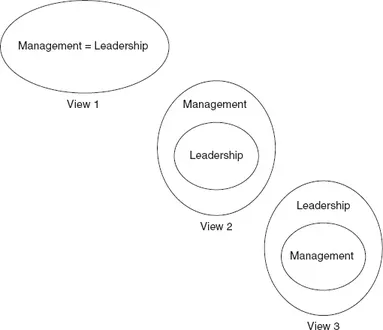Meeting the Public Health Competences
This chapter will help you to evidence the following competences for public health (Public Health Skills and Career Framework):
- Level 5(2) Lead on discrete areas of work;
- Level 5(d) Knowledge of various leadership styles;
- Level 5(e) Knowledge of the difference between management and leadership;
- Level 5(h) Understanding of your interaction with and impact on others;
- Level 6(a) Knowledge of the models and principles of leadership and their application;
- Level 7(b) Understanding of the models and principles of leadership and their potential use in improving population health and wellbeing;
- Level 8(1) Lead on improving population health and wellbeing within and/or across organisations;
- Level 8(a) Understanding of the models and principles of leadership and their potential use in improving and protecting health and wellbeing and in motivating colleagues and partners;
- Level 8(f) Understanding of basic management models and theories associated with motivation and leadership.
This chapter will also assist you in demonstrating the following National Occupational Standards for public health:
- Provide leadership for your team (M&L_B5);
- Provide leadership in your area of responsibility (M&L_B6);
- Lead others in improving health and wellbeing (PHP45);
- Lead teams and individuals to improve health and wellbeing (PHS20);
- Provide leadership for your organisation (M&L_B7).
In addition, this chapter will be useful in demonstrating Standard 11 of the Public Health Practitioner Standards:
Standard 11. Work collaboratively with people from teams and agencies other than one's own to improve health and wellbeing outcomes – demonstrating:
- awareness of personal impact on others;
- constructive relationships with a range of people who contribute to population health and wellbeing;
- awareness of:
- the principles of effective partnership working;
- the ways in which organisations, teams and individuals work together to improve health and wellbeing outcomes;
- the different forms that teams might take.
Overview
This chapter will help you to consider what leadership means and the implications for leading public health and health improvement. It will also help you to develop your thinking about the nature of leadership and how it differs from management. In this chapter we will consider the relationship between leadership and management and review some of the more traditional approaches to leadership, from trait and ‘style’ theories of leadership to approaches that view leadership as situational or dependent upon the situation in which leaders find themselves. Finally, we will consider some key challenges in leading public health programmes, and look at the implications for public health leadership.
The activities in this chapter will focus on:
- clarifying the differences between leadership and management;
- understanding why there is no one best way to lead;
- exploring a range of models and definitions of leadership;
- appreciating the strengths and weaknesses of different approaches to leadership and their potential use in improving population health and wellbeing.
This chapter uses theory, tools and case studies to explore leadership and management.
After reading this chapter you will be able to:
- articulate the difference between leadership and management;
- identify a range of models and definitions of leadership;
- appreciate the strengths and weaknesses of different approaches to leadership;
- identify key challenges for public health leadership.
The Relationship between Leadership and Management
Leadership is a topic that captures the public imagination and is regularly talked about: there are countless books, articles and publications about leadership, but no common agreement on what it is. It seems to be one of those concepts that we talk about, but find difficult to describe. Exploring the relationship between leadership and management might help to provide a clearer understanding of leadership.
Leadership and management are often used interchangeably, but to what extent are they the same thing? The answer you give to this question depends very much on your view of both management and leadership. There are a range of views about the differences and similarities between management and leadership.
Activity 1.1
Spend a few minutes thinking about your own experience of management and leadership, then consider the following questions.
What is management? What is leadership?
What do you see as the key tasks of a manager and a leader?
Do good managers make good leaders?
Do good leaders make good managers?
Comment
Martin et al. (2010) suggest that there are three frequently discussed ways of viewing the relationship between leadership and management. The first view sees management and leadership as the same thing (view 1 in Figure 1.1 below). This view is not as widely supported as it once was, and most people now make a distinction between leadership and management, arguing that these are not interchangeable. The second view sees management as a component of leadership (view 2), and the third view sees leadership as a subset of management (view 3). In his consideration of the roles that managers undertake, Mintzberg (1973) appears to share this third view, where he describes leadership as one of ten sub-roles of management rather than as a category in its own right.
Figure 1.1 The Relationship between Leadership and Management
Looking at the literature on leadership in more detail, two other ways of viewing the relationship between leadership and management emerge. One perspective is to view the two concepts as distinct from one another, and the other suggests that there is some overlap (as represented in Figure 1.2).
Whichever of these views of leadership and management you hold, currently there is general agreement that leading and managing are different enterprises. Bennis and Nanus (1985) state that there is a profound difference between management and leadership, and both are important. For Bennis and Nanus, to manage means to bring about, accomplish, have charge of or responsibility for conduct. Leading is influencing, guiding in a direction, course, action or opinion: Managers are people who do things right while leaders are people who do the right thing (1985, p221). Covey shares this view, stating that Management focuses on speed and methods – doing things right. Leadership focuses on direction and purpose – doing the right things (1989, p101).
Zaleznik (1977) argues that management and leadership are distinct activities requiring different skills and capabilities. He sees managers and leaders as being fundamentally different types of people who operate and think in very different ways. Leaders, he says, seek change and in doing so, do not need managerial structures or a sense of closure; they can tolerate or even create chaos. Managers seek order and control, and try to achieve closure of problems as quickly as possible. Leadership is concerned with vision, a sense of direction and the commitment of others, while management is the process of organising people and resources to achieve goals.
Figure 1.2 The Relationship between Leadership and Management – Additional Perspectives
Kotter (1990) distinguishes between managers as being concerned with transactions and leaders as being concerned with transformation. Kotter argues that both managers and leaders need to determine what needs to be done, develop the capacity to do it and ensure that it is done. However, there is a clear distinction between the way that managers and leaders deal with these functions. Managers decide what needs to be done through a process of planning, while leaders focus on setting the direction and creating the vision. In developing the capacity to do it, managers focus on organising and staffing, whereas leaders focus on aligning people, communicating the vision and enabling others to make the vision a reality. In ensuring that the task is done managers solve problems and control, whereas leaders are concerned with motivating and inspiring others and producing change. Northouse (1997) notes that leadership and management are similar in some ways, but that they are also quite different. For example, they both involve influence and require working with people, but they are different from one another, with management producing order and consistency, and leadership producing change and movement.
Table 1.1 provides a summary of the differences between management and leadership identified by Kotter (1990) and Northouse (1997). Look back at your response to Activity 1.1 and see whether you identified any of these differences.
Source: Adapted from Northouse (1997) and Kotter (1990)
In summary, contemporary ideas about leadership and management share a consensus that leading and managing are different, but whether they are distinct is less clear. As mentioned previously, management roles involve managers planning, organising and controlling work, while leaders are usually concerned with change and creating vision. Although leaders do not have to be managers, many managers are often required to display leadership capability.
Martin et al. (2010, p30) suggest that a useful way of seeing the relationship between managers and leaders is to think of these roles a...



